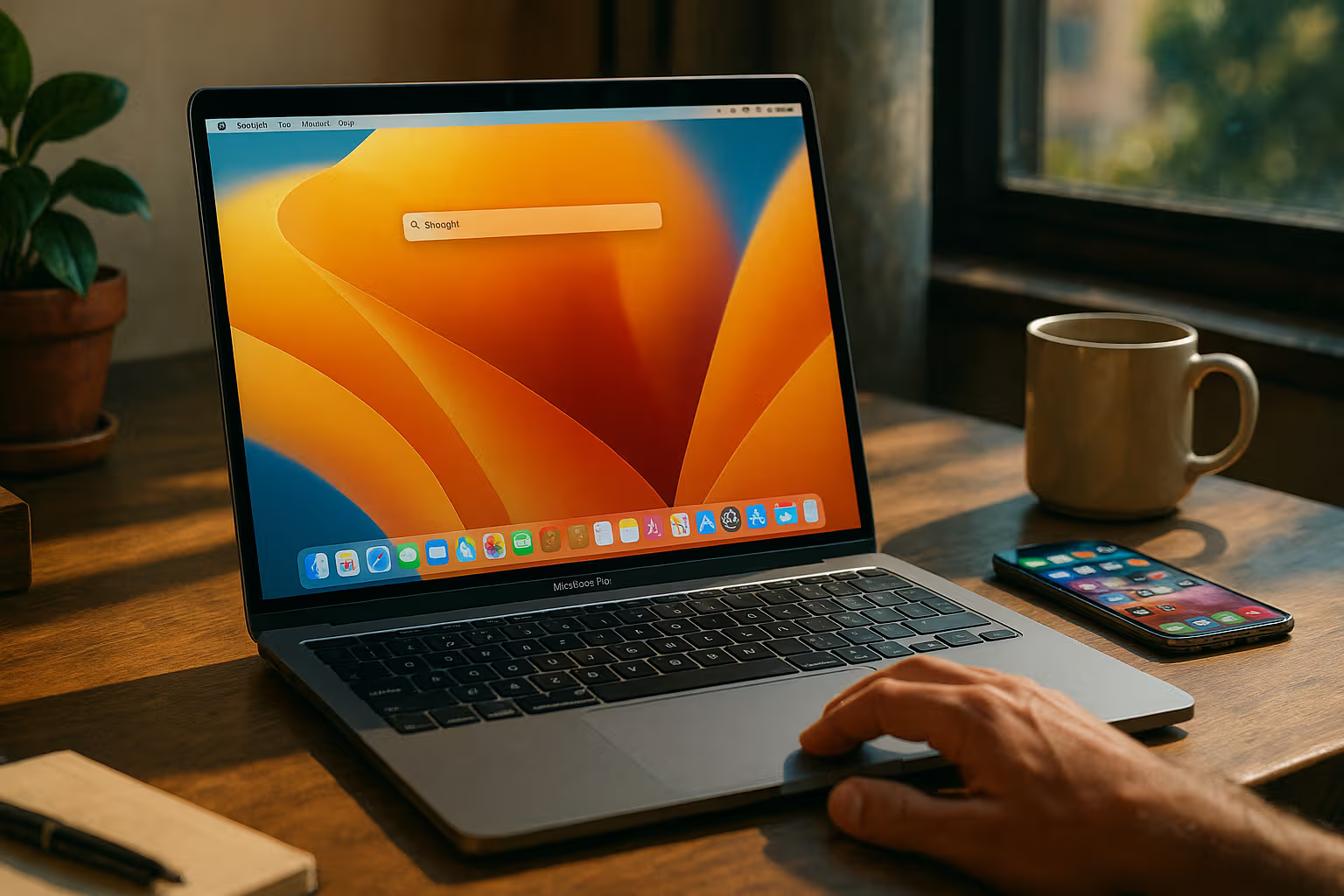
macOS as the Quiet Engine of Productivity
The promise of productivity is often tied to new apps, endless task managers, or yet another cloud tool promising salvation. What most Mac users overlook is that the foundation for productivity already exists in the operating system itself. macOS is not just a gateway to software—it is software with a philosophy. It is built on the idea that work should feel smooth, focused, and continuous. The question is not whether you have the tools, but whether you know how to unlock them.
At the beginner’s level, macOS feels straightforward. The Dock, Finder, and Spotlight are easy to grasp and designed with immediate clarity. Yet each of these entry‑level tools has layers of depth. Spotlight, for instance, is not just a search bar—it is a launcher, a calculator, a converter, and even a quick reference dictionary. The power lies not in its novelty but in its immediacy. When you no longer pause to open apps or hunt through folders, you begin to reclaim seconds that stack into minutes, and minutes that become hours.
Finder, too, deserves fresh attention. Most people treat it as a mere folder system, a digital filing cabinet to be endured. But with Tags and Smart Folders, Finder becomes a dynamic assistant. Imagine automatically surfacing every invoice, design draft, or presentation without touching a folder. Add Quick Look to the mix, and you can preview files in a flash without interrupting your flow. What begins as a basic file manager becomes a subtle but powerful productivity layer once you lean into its deeper features.
As soon as you get comfortable with those basics, macOS invites you into a new way of working with Mission Control and multiple Desktops. Instead of juggling windows like a messy desk, you spread them across separate virtual spaces. Communication apps live in one Desktop, creative tools in another, research in a third. A three‑finger swipe later, and your context shifts without distraction. This isn’t just aesthetic separation; it’s cognitive relief. By placing boundaries around your work, macOS helps you switch with intention rather than scatter your attention.
Keyboard shortcuts elevate this even further. At first, they feel like tricks for the tech‑obsessed, but the more you practice, the more they transform your relationship with the machine. Command‑Space for Spotlight, Command‑Tab for switching apps, Spacebar for Quick Look—the effect is compounding. The muscle memory builds until the Mac becomes less of a device and more of an extension of your mind. You don’t think about commands anymore; you move through them. It’s fluency, and fluency is the hidden language of productivity.
Then comes automation, where macOS stops being reactive and starts being proactive. The Shortcuts app, once dismissed as an iOS toy, is now a genuine powerhouse on the Mac. Imagine a single Shortcut that opens your daily workspace: your task manager, your main project files, your writing app, and your favourite focus playlist. Or picture a Shortcut that cleans your Downloads folder, renames files according to your rules, and files them away in the cloud. With enough imagination, you begin to outsource entire categories of busywork. The result is not just efficiency—it is mental clarity.
Distractions are the eternal enemy, and macOS answers with Focus modes. Instead of drowning in notifications, you set precise rules about what can reach you and when. During deep work, only family emergencies break through. During meetings, your collaboration tools take priority, but nothing else intrudes. At night, the walls go up completely. These modes are not simply about muting noise—they are about designing your environment around intention. Focus turns your Mac from a passive device into an active gatekeeper of your attention.
The deeper you go, the more you realise how macOS thrives as part of a larger ecosystem. Handoff lets you draft an email on your iPhone and finish it seamlessly on your Mac. Universal Clipboard makes copy‑and‑paste feel like a small act of magic across devices. Continuity Camera turns your iPhone into a document scanner or instant webcam, eliminating friction. Sidecar extends your workspace with an iPad in seconds. None of these features screams for attention, but each one quietly protects your focus by making the act of switching invisible.
Over time, you notice a pattern: macOS does not force productivity onto you. It does not scream or dazzle with features. Instead, it waits patiently, rewarding those who explore and layer its tools. The more you engage with Spotlight, Finder, Mission Control, Shortcuts, and Focus, the more the system bends toward your rhythm. What emerges is not a machine you command but a partner that flows with you. And once you taste that level of synergy, you begin to understand why macOS is not just another operating system but a quiet engine of productivity.
The real secret is this: productivity with macOS is not about doing more. It is about doing with less friction, fewer interruptions, and less effort wasted on logistics. It is about working in a rhythm that feels natural instead of forced. It is about letting the system fade into the background, allowing you to focus on your actual work. For those who learn its language, macOS stops being a pretty shell and becomes what it was always meant to be: a platform for flow.


